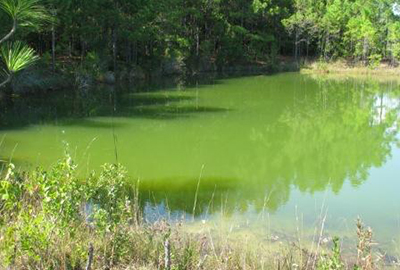
Algae - planktonic
My pond has become very cloudy and green, like pea soup, or has a thin film of bright green or red "scum" floating on the water surface.
Learn More about Algae planktonic
Aquatic plants are essential for a well-balanced pond and healthy aquatic ecosystem. They provide many important services including:
On the other hand, too much plant material in and around a stormwater pond can cause significant problems such as sedimentation, reduced volume, reduced residence time, stagnancy, noxious odors, obstructed pipes and outfalls, impediments to maintenance equipment, and overall unsightliness.
For help with identifying your aquatic plants, consult your county's Extension office or check out these online aquatic plant identification aids.

My pond has become very cloudy and green, like pea soup, or has a thin film of bright green or red "scum" floating on the water surface.
Learn More about Algae planktonic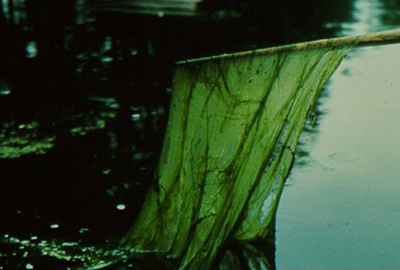
Filamentous algae form green, "hair-like" strands that grow on the surface of other plants or objects in the water. They do not have roots, leaves or flowers. In large blooms, filamentous algae can break loose and form large floating mats.
Learn More about Algae - filamentous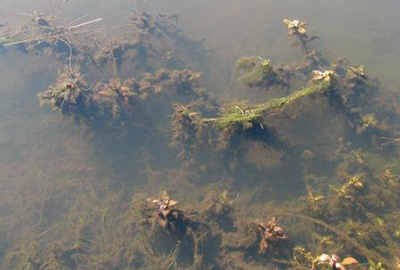
Unlike filamentous algae, these plants are rooted into the bottom and have roots, stems and leaves. Some are able to break loose from the bottom and survive floating in the water. These plants are often described as"grass-like" or "moss-like." They grow from the bottom up to the surface and often have flowers below or above the water.
Learn More about Submergerd Plants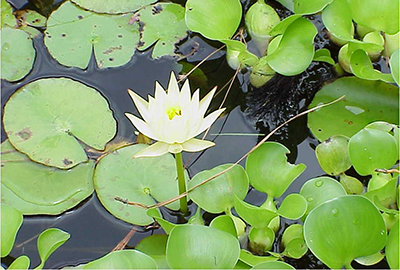
Floating plants have leaves that lay on the water surface. Some are rooted in the bottom (such as lilypads and lotus) while others are free-floating on the surface (such as duckweed and waterhyacinth).
Learn More about Floating Plants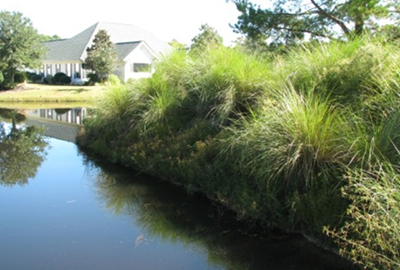
These are plants that are rooted in very shallow water and at the water's edge. Some are creeping or "vine-like" and can reach out into the pond (such as alligatorweed and waterprimrose) while others grow vertically (such as cattails and rushes).
Learn More about Shoreline Emergent Plants